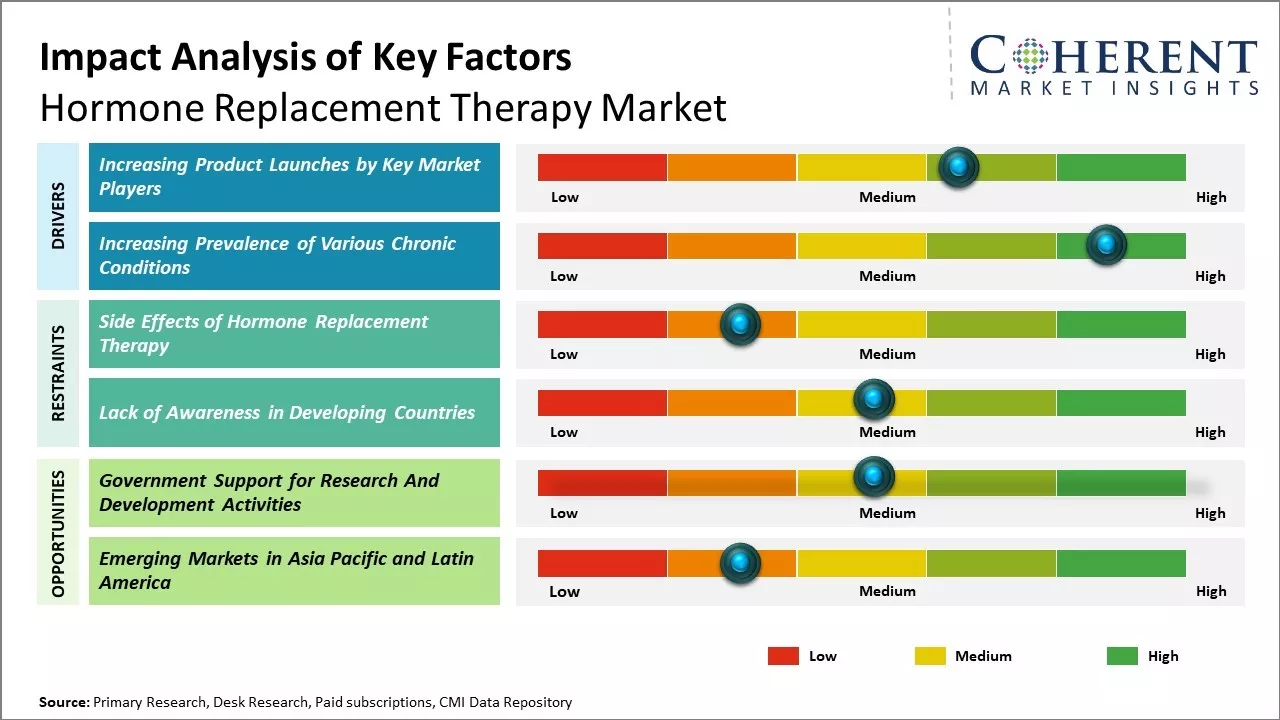The global hormone replacement therapy market is estimated to be valued at USD 15.78 Bn in 2025 and is expected to reach USD 23.75 Bn by 2032, exhibiting a compound annual growth rate (CAGR) of 6.0% from 2025 to 2032.

To learn more about this report, Request sample copy
The global hormone replacement therapy is expected to witness significant growth over the forecast period. Rising prevalence of hormonal deficiencies due to the increasing geriatric population is expected to drive the demand for hormone replacement therapy. Additionally, increasing consumer awareness about benefits of the treatment in managing menopausal symptoms is further expected to propel the market growth. However, risks and side effects associated with long-term use of hormone replacement therapy such as blood clots, heart attacks, and breast cancer could hamper the market growth.
Market Driver – Increasing Product Launches by Key Market Players
Market players are involved in launching new drugs and this is expected to drive growth of the global hormone replacement therapy market over the forecast period. For instance, in October 2021, Theramex, a pharmaceutical company, announced that it had launched Bijuva/Bijuve (estradiol and progesterone) across Europe and the U.K. Bijuva/Bijuve (estradiol and progesterone) is the first and only body-identical combined hormone therapy treatment for post-menopausal women.
Joining thousands of companies around the world committed to making the Excellent Business Solutions.
View All Our Clients